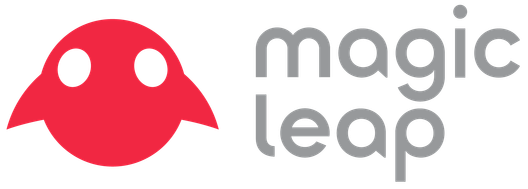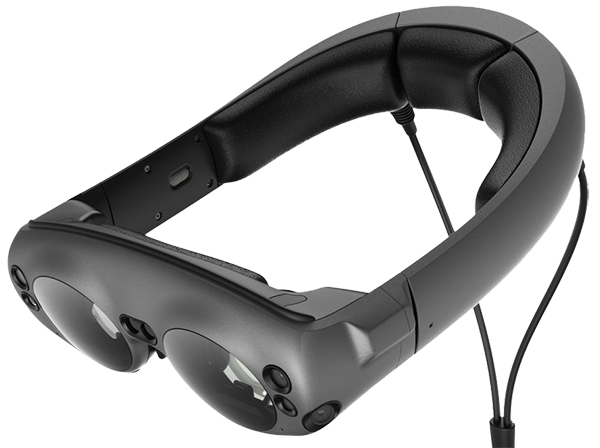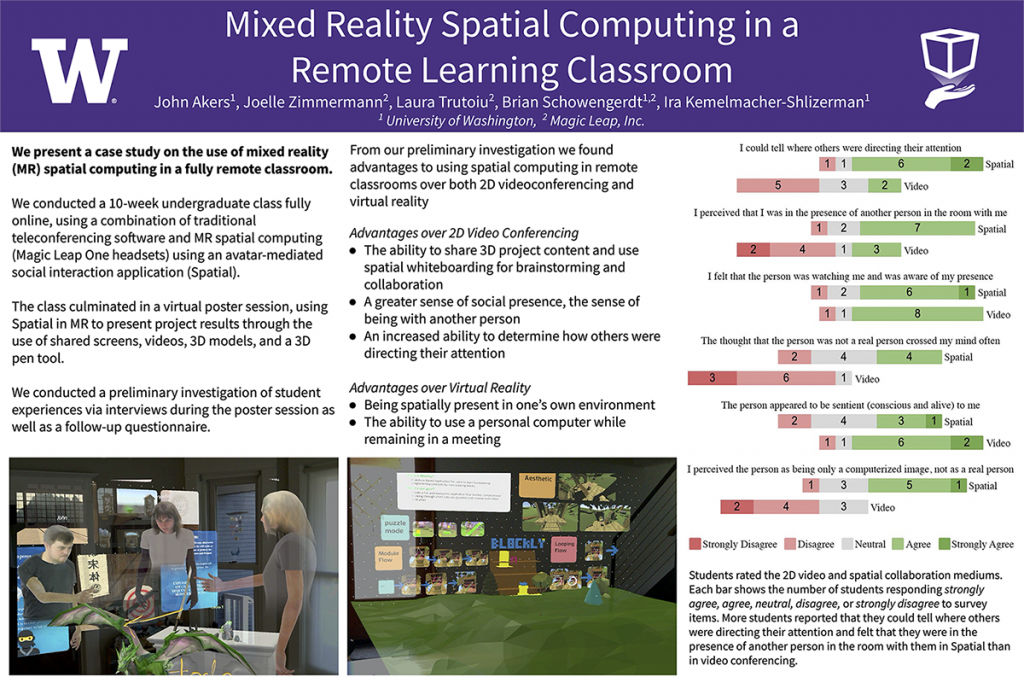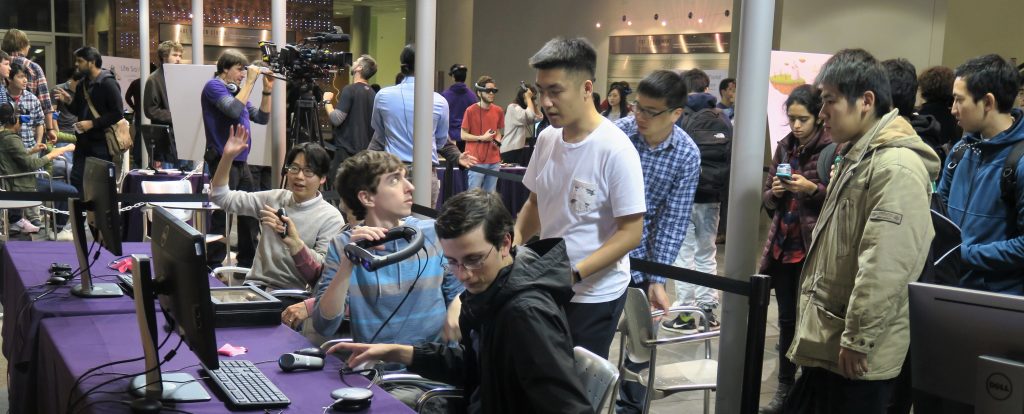Awareness of how important spatial computing, distance learning, and telepresence are has accelerated in 2020, thanks to the ongoing pandemic. One exploration of this by the UW Reality Lab and Magic leap will be part of the upcoming Spatial User Interaction Conference (SUI 2020) on Friday, October 30th. It developed out of the need to re-design this year’s AR/VR Capstone class to be completely virtual. The class was surveyed both during and after the academic quarter to learn more about using MR technology for distance education and team projects.
When the University of Washington decided to go virtual for the Spring 2020 quarter, classes that involved team projects needed to adapt. Most years, the 28-30 students of the AR/VR Capstone would meet together, pitch ideas and themes, and then break into teams to work collaboratively in the lab – long hours developing an AR or VR application. They would sit together, share headsets, get advice from TAs and instructors, and gather for lectures and presentations. At the end of the quarter they would have a public Demo Day in the atrium of the Allen School, where several hundred people would gather and try out their work.
But this time, the students couldn’t meet in person at all. The instructors worked with them online to develop and advise their projects, and also to assess what sort of computer equipment and connectivity each student had in their homes. It was clear that the class would need more headsets than the program owned, and we needed to source and deliver all those headsets quickly! With little warning, the instructors reached out to Magic Leap.

Magic Leap quickly agreed to loan a Magic Leap One headset to every member of the class! At that point we began discussing how we could use this opportunity to explore the effects of spatial computing in an educational setting.

In addition to the headsets, Magic Leap provided students with support, talks and demonstrations, and access to “Spatial”, a third-party application that allowed students to connect with each other through their headsets.
Co-Instructors Ira Kemelmacher-Shlizerman and John Akers encouraged the student teams to develop apps that were related to the health crisis: Whether that meant health and well-being, working from home, or something else was up to the imagination of the students. At the end of the 10 weeks, the students and instructors demonstrated the projects through the Spatial app, YouTube, and video-conference with live streaming from headsets.
We had used augmented and virtual reality technology in the classroom before. This time, the answers the students gave about their experiences helped us learn more about using this technology as the classroom.
Abstract: We present a case study on the use of mixed reality (MR) spatial computing in a fully remote classroom. We conducted a 10-week undergraduate class fully online, using a combination of traditional teleconferencing software and MR spatial computing (Magic Leap One headsets) using an avatar-mediated social interaction application (Spatial). The class culminated in a virtual poster session, using Spatial in MR to present project results, and we conducted a preliminary investigation of students experiences via interviews and questionnaires. Students reported that they had a good experience using MR for the poster session and that they thought it provided advantages over 2D video conferencing. Particular advantages cited were a stronger sense that they were in the presence of other students and instructors, an improved ability to tell where others were directing their attention, and a better ability to share 3D project content and collaborate.
John Akers, Joelle Zimmermann, Laura Trutoiu, Brian Schowengerdt, Ira Kemelmacher-Shlizerman


